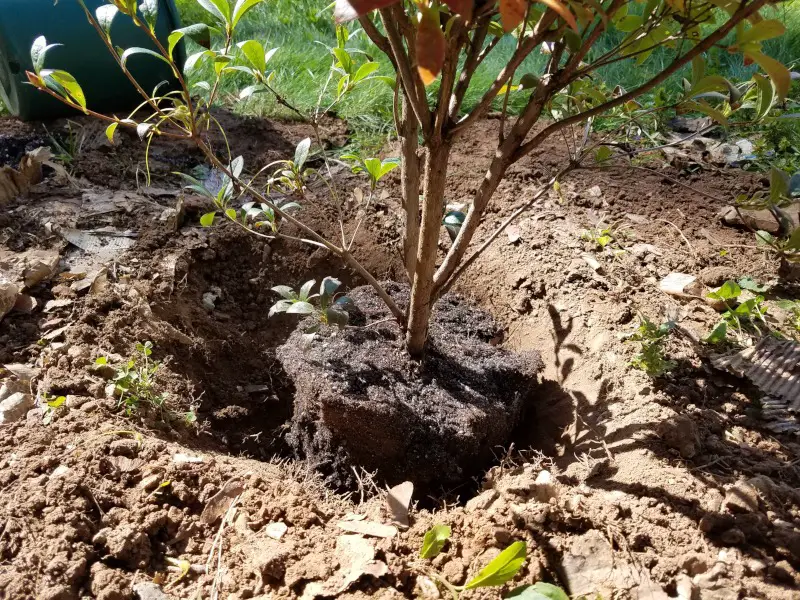Azaleas bring life and color to any garden with their graceful forms and vivid flowers. They thrive when growing in the right soil and light. Over time, though, their surroundings may stop meeting their needs. Too much sun, compacted roots, or poor drainage can slowly weaken the plant. When signs of stress appear, transplanting offers a new beginning and restores the shrub’s natural vigor.
Moving azaleas requires patience and timing. The right moment allows the roots to settle before new growth starts. When done properly, the plant adapts quickly and grows stronger than before. Healthy roots lead to fuller foliage and a brighter bloom display in the next season. With thoughtful care and the correct timing, transplanting turns into an opportunity to keep azaleas thriving and blooming beautifully year after year.
Understanding the Right Time to Transplant Azaleas

Timing plays the most important role in successfully transplanting azaleas. These shrubs are sensitive to both temperature and root disturbance, so choosing the correct season ensures they recover without stress. The best time to transplant azaleas is early spring or early fall, when temperatures are cool and the soil stays moist. During these transitional periods, the plant’s energy is focused on root development rather than flowering or producing new foliage. Avoid moving azaleas in the peak of summer or during winter freezes, as extreme heat or cold can cause root damage and delay recovery.
Spring transplanting is ideal in regions with cold winters, as it gives azaleas enough time to establish before summer growth. Once the soil has thawed and daytime temperatures reach around 60°F (15°C), roots can expand steadily. In warmer climates, fall transplanting is often more successful because the cooler weather and seasonal rainfall help reduce transplant shock. Azaleas planted during this period can settle in quietly through winter, storing energy for a vibrant spring bloom. Gardeners in coastal or southern areas often find fall the safest and most forgiving season for relocation.
Environmental stability also matters greatly when choosing transplant timing. Avoid weeks with heavy rainfall, drought, or strong winds. The soil should feel soft, slightly damp, and easy to work with. Consistent moisture supports new root growth, while calm weather prevents excess water loss through the leaves. Planning ahead and observing your local weather patterns ensures better transplanting results. When azaleas are moved at the right moment, they adapt faster, maintain healthier foliage, and bloom with renewed vigor in the following season—rewarding your timing and care with years of thriving color.
Signs Your Azalea Needs Transplanting
Azaleas can remain healthy in one location for many years, but certain changes in their appearance and growth patterns reveal when it’s time to move them. One of the clearest signs is reduced blooming. If your azalea produces fewer flowers each year, even with proper care, its roots may have become crowded or the soil may have lost nutrients. Over time, the surrounding plants might also compete for light and moisture, leaving the azalea struggling to grow. Transplanting it to a location with better air circulation, light balance, and soil conditions restores both its energy and its natural blooming rhythm.
Another sign is yellowing leaves or slow new growth, which often indicates poor soil drainage or compacted roots. Azaleas prefer loose, acidic soil that allows roots to breathe. When the soil becomes heavy or waterlogged, roots begin to suffocate and lose their ability to absorb nutrients. This stress shows in weak stems, dull leaves, and premature leaf drop. Moving the shrub to a well-draining area with slightly elevated ground can solve these issues and allow the plant to rebuild a healthy root system. A change in location often brings new life to an azalea that appeared to be declining.
Environmental shifts can also create conditions that no longer suit the plant. If nearby trees have grown taller, they may cast too much shade, blocking the sunlight azaleas need for bud formation. In other cases, urban construction or landscape redesigns may alter drainage patterns or soil pH. When your azalea starts looking less vibrant, despite regular watering and fertilizing, relocation is often the best solution. Recognizing these signs early allows you to act before permanent root damage occurs, ensuring the plant remains strong and capable of producing abundant blooms for years to come.
Choosing the Best Location for Transplanted Azaleas
Selecting the perfect spot for your transplanted azalea is the foundation for long-term success. Azaleas thrive in partial shade, where they receive gentle morning sunlight and protection from harsh afternoon rays. Too much direct sunlight can scorch leaves and shorten blooming time, while excessive shade limits flower production. Ideally, plant azaleas on the east or northeast side of a building or under high, filtered tree canopies. This balance of light and shade encourages even bud formation and helps maintain consistent leaf color. Choosing the right exposure ensures your azalea continues to bloom beautifully season after season.
Soil quality is another crucial factor when selecting a new location. Azaleas prefer acidic, well-draining soil with a pH between 4.5 and 6.0. In heavy clay or compacted areas, mix in organic matter such as pine bark, compost, or peat moss to improve texture and aeration. Good drainage prevents water from pooling around the roots, which can cause rot and nutrient deficiency. Before transplanting, test the soil’s acidity and make any necessary adjustments. Well-prepared soil gives the roots the environment they need to establish quickly and stay healthy throughout the year.
Wind protection and temperature stability also play an important role in choosing a new site. Avoid open or exposed areas where cold winds or intense summer heat can stress the plant. A slightly sheltered position near other shrubs or structures provides a natural buffer against temperature extremes. Consistent moisture levels, moderate sunlight, and protection from severe weather all help azaleas adapt more easily after transplantation. By selecting a location that mimics their natural woodland habitat, you give your azaleas the best possible conditions to recover, flourish, and deliver a vibrant display of flowers every spring.
Preparing the Soil Before Transplanting Azaleas
Healthy soil is the most important factor for a successful azalea transplant. These shrubs have fine, fibrous roots that require a loose, airy medium to spread and breathe. Before transplanting, loosen the soil in the chosen location to a depth of about 12 to 15 inches and mix in generous amounts of organic matter such as pine bark, compost, or leaf mold. This improves texture, promotes drainage, and helps retain essential moisture. Avoid using heavy clay or sandy soil without amendments, as both extremes can stress roots. The goal is to create a balanced environment that supports steady root development and prevents waterlogging.
Checking and adjusting soil pH is equally critical. Azaleas thrive in acidic soil, ideally between 4.5 and 6.0. If your soil is too alkaline, blend in peat moss or elemental sulfur several weeks before transplanting to allow the pH to stabilize. You can test the soil using a simple pH kit from any garden center. Balanced acidity ensures the plant can absorb key nutrients such as iron, magnesium, and nitrogen, all of which support healthy foliage and vibrant blooms. Regular testing before and after transplanting helps maintain the right growing conditions throughout the plant’s life.
Once the soil texture and acidity are ideal, shape a wide, shallow planting hole. Azaleas have shallow root systems that spread outward more than downward, so the hole should be two to three times wider than the root ball but only slightly deeper. Water the area thoroughly a day before transplanting to make the soil soft and welcoming for roots. Proper soil preparation not only minimizes transplant shock but also gives azaleas a strong foundation for immediate recovery, steady growth, and abundant flowering in the seasons ahead.
How to Transplant Azaleas Step by Step
The process of transplanting azaleas requires care and precision to protect their delicate root systems. Begin by watering the plant deeply one or two days before moving it. Moist soil holds together better, reducing stress on the roots during digging. When ready, mark the area around the azalea’s drip line and dig a wide circle about 12 to 18 inches from the base. Keep your shovel angled slightly inward to lift the root ball with minimal damage. Try to preserve as much of the root system as possible, as azaleas depend heavily on their fine feeder roots for quick recovery and reestablishment.
Next, prepare the new planting hole before relocating the shrub. The hole should be twice as wide as the root ball but only as deep, ensuring the top of the root mass remains level with or slightly above the soil surface. Gently set the azalea in place and adjust its position so that the plant faces the same direction as before—this helps minimize sun shock. Once positioned correctly, fill in the hole gradually with the prepared soil mix, pressing gently around the roots to remove air pockets. Avoid compacting the soil too tightly, as this can restrict oxygen flow.
After planting, water the azalea thoroughly to help settle the soil and reduce transplant shock. Add a two- to three-inch layer of mulch around the base to retain moisture and regulate temperature. Avoid piling mulch directly against the stem to prevent rot. Over the next few weeks, monitor soil moisture carefully, keeping it consistently damp but never waterlogged. This attentive care helps the plant establish roots in its new location quickly and prepares it for a healthy burst of growth and flowering in the following season.
Post-Transplant Care for Azaleas
The weeks following transplanting are the most critical for your azalea’s survival and future blooms. After moving the plant, keep the soil consistently moist but not soggy. Azaleas have shallow roots that dry out quickly, especially in warm weather. Water deeply two to three times a week during the first month, then reduce the frequency once new growth appears. Use mulch to retain moisture and regulate soil temperature. Organic mulch, such as pine needles or shredded bark, keeps the roots cool while adding nutrients as it decomposes. Avoid letting the soil dry out completely, as this can cause leaf drop or delay recovery.
Monitoring the plant’s health during the adjustment phase helps prevent stress and disease. If leaves start wilting or turning yellow, check soil drainage—too much water can suffocate the roots. Provide partial shade during hot afternoons to protect the plant from sun stress, especially if it was recently moved from a shaded area. Avoid fertilizing for at least six weeks after transplanting. The roots need time to heal and adapt before taking in nutrients. Once new shoots emerge, a light feeding with fertilizer for acid-loving plants supports healthy regrowth.
Pruning lightly after new growth appears helps balance the plant’s energy and shape. Remove any damaged or broken branches caused by the move. Continue to monitor for pests such as lace bugs or spider mites, which can attack weakened plants. With consistent watering, moderate sunlight, and patience, transplanted azaleas will establish a strong root system. Within one or two seasons, the plant rewards your effort with lush foliage and abundant, colorful blooms that last longer and appear healthier than before.
Common Mistakes to Avoid When Transplanting Azaleas
Transplanting at the Wrong Time
One of the biggest mistakes gardeners make is moving azaleas during the wrong season. Transplanting in extreme heat or cold places unnecessary stress on the plant and increases the risk of root damage. In hot weather, soil dries out too quickly, leaving roots dehydrated. In winter, frozen ground prevents proper root establishment. The ideal time to transplant azaleas is early spring or early fall, when temperatures are mild and soil remains workable. These conditions allow roots to adapt naturally before the growing season or winter dormancy.
Timing affects not only survival but also future blooms. If azaleas are moved right before or during their blooming period, flower buds may fail to open or drop prematurely. Always wait until the blooming phase ends before transplanting. This ensures the plant can focus its energy on root development instead of sustaining flowers. Choosing the right moment minimizes stress, prevents transplant shock, and sets the foundation for a faster, healthier recovery.
Planting Too Deep or Too Shallow
Planting depth greatly influences the success of transplanted azaleas. Setting the plant too deep suffocates the roots and restricts oxygen flow, while planting too shallow exposes them to temperature extremes and drying. The top of the root ball should always sit level with or slightly above the surrounding soil. This allows excess water to drain away easily while keeping the upper roots aerated. When the planting hole is too deep, water collects around the stem base, leading to rot and fungal problems.
A common mistake is filling the hole with heavy or compacted soil that settles after watering, pulling the plant down. To prevent this, backfill the hole gradually and press gently to remove air pockets without compressing the soil. After planting, water thoroughly to help the soil settle naturally. Correct depth placement ensures healthy root respiration and stable establishment, allowing the azalea to grow evenly and bloom abundantly in its new location.
Ignoring Soil Acidity
Soil acidity is one of the most critical factors for azalea health, yet it’s often overlooked during transplanting. Azaleas thrive in acidic soil with a pH between 4.5 and 6.0. When planted in alkaline or neutral soil, they struggle to absorb essential nutrients like iron and magnesium. This imbalance leads to yellow leaves, poor growth, and reduced flowering. Many gardeners skip soil testing before transplanting, assuming the conditions are suitable, but even a slight pH shift can cause long-term decline. Always test the soil and amend it with peat moss, sulfur, or pine bark before replanting to maintain proper acidity.
In alkaline environments, nutrient deficiency can worsen over time, even with regular fertilizing. The plant may appear healthy for a few months before showing stress symptoms, which are difficult to reverse once root damage begins. Using rainwater instead of tap water can also help preserve soil acidity, especially in hard-water regions. Regular monitoring ensures consistent pH balance, allowing the azalea to thrive and bloom fully. Prioritizing soil chemistry before and after transplanting keeps your shrub vibrant and resistant to disease.
Overwatering or Underwatering After Transplant
Water management after transplanting determines whether an azalea adapts successfully. Overwatering is one of the most frequent mistakes gardeners make. Azaleas have shallow roots that require oxygen, and when constantly soaked, these roots suffocate and rot. The soil should remain consistently moist but never soggy. Conversely, letting the soil dry out too long causes root dehydration, leading to drooping leaves and bud loss. The key is balance—steady, deep watering two to three times per week depending on temperature and rainfall.
Proper drainage is equally important. If the transplant site retains too much water, add organic matter or sand to improve aeration. Mulching helps maintain steady soil moisture and prevents rapid evaporation, but keep mulch away from the trunk to avoid fungal issues. During the first month, check moisture levels frequently by touching the soil around the base. Slight dampness indicates the ideal condition. Balanced watering supports healthy root recovery, allowing the azalea to settle quickly and resume vigorous growth in its new environment.
Pruning Too Soon
Pruning too soon after transplanting is a mistake that can slow an azalea’s recovery. Newly moved plants focus their energy on repairing roots and adapting to new soil. Cutting branches during this fragile stage forces the shrub to divide energy between healing and regrowth. This stress often results in fewer leaves, delayed blooming, or even dieback. The best approach is to wait until new growth appears and the plant shows signs of recovery—usually six to eight weeks after transplanting. Once the azalea stabilizes, light pruning can help balance its shape and encourage healthy branching.
When pruning begins too early, exposed cuts can also invite fungal infections or pest infestations. The plant’s weakened state makes it more vulnerable to disease and weather stress. Always use sterilized pruning shears and make clean cuts just above leaf nodes. Remove only dead, damaged, or crossing branches in the first season. Heavy shaping or size reduction should be postponed until the following year. By delaying pruning, the azalea has time to rebuild strength, ensuring lush growth and abundant flowers when the next blooming season arrives.
Neglecting Post-Transplant Care
Neglecting care after transplanting is one of the main reasons azaleas fail to establish successfully. Many gardeners assume the work ends once the shrub is planted, but post-transplant attention is essential for survival. Azaleas require consistent moisture, moderate sunlight, and protection from strong winds or direct afternoon heat. Skipping these steps can cause root stress and slow adaptation. During the first few months, monitor the plant regularly to ensure the soil remains moist and that leaves appear firm and green. Early detection of wilting or discoloration allows quick correction before permanent damage occurs.
Fertilizing too soon is another common mistake. Freshly moved azaleas cannot absorb nutrients efficiently until roots settle. Applying fertilizer immediately can burn the roots and further delay recovery. Wait at least six weeks before feeding lightly with an acid-based formula. Continue mulching to retain soil moisture and regulate temperature. Gentle, consistent care in the first season helps the plant adjust, rebuild root strength, and prepare for vigorous growth. With proper follow-up, transplanted azaleas will flourish and reward you with strong foliage and radiant blooms year after year.
Seasonal Care After Transplanting Azaleas
Spring Care
Spring is the most important season for transplanted azaleas as new roots begin to grow and the plant adjusts to its new environment. During this time, consistent moisture and mild temperatures help roots expand and strengthen. Water the shrub deeply two to three times a week, ensuring the soil remains evenly moist but never waterlogged. Avoid heavy fertilizer use early in spring; instead, wait until new shoots emerge, then feed lightly with an acid-based fertilizer to promote steady growth. A layer of pine bark mulch helps conserve moisture and maintain soil acidity.
As temperatures rise, monitor for signs of transplant stress, such as drooping leaves or yellowing. These often indicate either too much or too little water. Provide light morning sunlight and protection from intense afternoon rays to prevent dehydration. If spring rainfall is irregular, adjust watering accordingly. Remove any flowers that appear during this stage to help the plant focus on root development rather than blooming. Proper spring care ensures azaleas build a strong foundation for healthy growth and vibrant blooms in the following season.
Summer Care
Summer is a challenging season for transplanted azaleas due to heat and increased water loss. During this time, maintaining consistent soil moisture becomes crucial. Water deeply once or twice a week, depending on rainfall, to encourage deeper root growth and prevent heat stress. Early morning watering is best, allowing moisture to soak in before midday heat causes evaporation. Avoid overhead watering to reduce fungal risks—focus on the soil level instead. Adding a two- to three-inch mulch layer keeps roots cool and preserves soil moisture.
Protection from harsh sunlight is equally important. Azaleas thrive in partial shade, so if they receive direct afternoon sun, provide temporary shade using a garden cloth or nearby taller plants. Refrain from fertilizing or pruning during extreme heat since this can shock the plant. Instead, monitor for pests like lace bugs and spider mites, which thrive in warm, dry weather. Maintain humidity through occasional misting if conditions are too dry. By managing moisture, sunlight, and pest control, your azaleas will remain strong and vibrant through the summer months.
Fall Care
Fall is the most critical time for root strengthening after transplantation. As temperatures cool and rainfall increases, azaleas naturally shift energy from foliage to root growth. Continue watering regularly but reduce frequency as the weather cools. Let the soil surface dry slightly between waterings to prevent rot. Refresh the mulch layer to protect the shallow roots from temperature swings. This helps retain heat and prevents frost from reaching the root zone too early. Avoid adding fertilizer late in the season, as it may trigger new growth that will not survive winter frost.
Instead, focus on maintaining soil acidity and health. Remove fallen leaves and debris around the plant to reduce fungal risk. Check the soil’s pH and adjust with pine bark or peat moss if needed. Ensure the azalea still receives morning sunlight and protection from harsh winds. If the plant appears weak, apply a diluted seaweed solution to stimulate root vigor. With proper fall care, azaleas store energy efficiently, preparing for dormancy and setting the stage for a healthy bloom when spring returns.
Winter Care
Winter is a time of rest and preservation for transplanted azaleas, but protection remains essential. Cold winds and fluctuating temperatures can damage tender roots and buds. Begin by applying a thick three- to four-inch mulch layer around the base to insulate the soil and prevent freezing. In regions with heavy snow or ice, brush off accumulation from branches to avoid breakage. Water the plant sparingly during dry winter periods, as roots can still dehydrate even when dormant. Moist—but not soggy—soil keeps the plant stable through the cold months.
For regions with severe frost, wrap shrubs in burlap or use windbreaks to prevent desiccation from freezing winds. Potted azaleas should be moved to a sheltered area such as a garage or covered patio. Avoid pruning or feeding during this time; the plant must stay dormant to conserve energy. Occasionally check for rodents or pests nesting in the mulch. As temperatures warm in late winter, gradually remove protective coverings to reintroduce sunlight. These winter measures preserve plant health, ensuring azaleas reawaken strong, vigorous, and ready to bloom once spring arrives.
FAQs About Transplanting Azaleas
When Is the Best Time to Transplant Azaleas?
The best time to transplant azaleas is early spring or early fall, when temperatures are mild and soil moisture is stable. These seasons allow roots to establish before extreme weather arrives. Avoid summer heat and winter frost, as both can stress the plant and cause root damage.
How Do I Know If My Azalea Needs Transplanting?
An azalea that blooms less, shows yellow leaves, or grows poorly likely needs moving. Root crowding, poor drainage, or too much shade are common triggers. If nearby trees or plants limit light and nutrients, relocating the azalea to a brighter, well-drained site helps restore its vitality.
How Deep Should I Plant an Azalea When Transplanting?
Plant azaleas shallowly, keeping the top of the root ball slightly above soil level. Their roots spread horizontally near the surface and need oxygen. Planting too deep can cause rot and poor growth. Finish with light mulching to retain moisture while allowing air to reach the roots.
How Often Should I Water After Transplanting?
Water deeply two or three times a week during the first month after transplanting. Keep soil evenly moist but never waterlogged. As the plant establishes, reduce watering frequency slightly. Always adjust based on temperature and rainfall, maintaining moisture stability to prevent root stress and dehydration.
Can I Transplant Azaleas While They’re Blooming?
Transplanting during bloom isn’t ideal because the plant’s energy focuses on flowers, not roots. Moving it now can cause flower drop and slow recovery. It’s better to wait until flowering ends, allowing the azalea to rebuild roots and prepare for next season’s healthy, vibrant bloom cycle.
Conclusion
Transplanting azaleas is both an art and a science that rewards patience and care. By choosing the right season, preparing rich acidic soil, and maintaining steady moisture, gardeners can ensure strong root establishment and lasting health. Proper aftercare through each season prevents stress and encourages abundant flowering. When transplanted thoughtfully, azaleas not only survive the move but flourish—producing brighter blooms, lusher foliage, and renewed vigor year after year. With timing, preparation, and consistency, every azalea can thrive beautifully in its new home, turning your garden into a living display of color and resilience.






